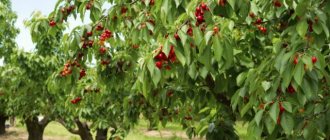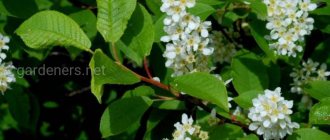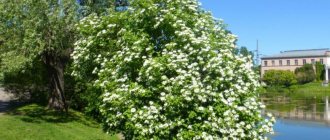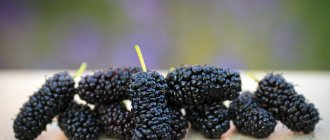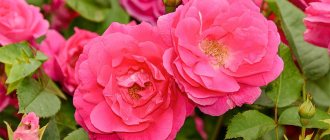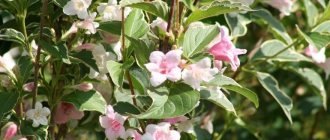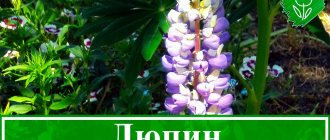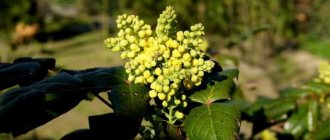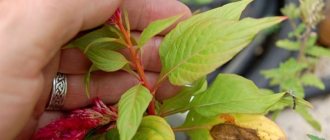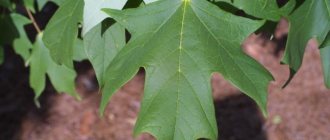Review author: Terrari School of Design
Erigeron, also called small sandweed, is considered a member of the aster family. The name of the plant translates as “early old man.” The reason is the rapid maturation of the seeds, forming a grayish tuft.
Erigeron is also planted for decorative purposes. Therefore, it is worth considering how to grow this flower from seeds and how to properly care for it.
Description of the plant
The flowers of Erigeron amaze with their diversity. They are represented by annuals, biennials and perennials. They are represented by rhizomatous herbs or subshrubs resembling asters.
Depending on the variety, single flowers or inflorescences may form on the shoots of Erigeron. Elongated petals form a single-row or fluffy calyx in white, pink, lilac, blue or yellow. The core of the flower is often painted a rich yellow color.
Common types
Beautiful small petal
Its home is the North American continent. The stems are smooth, slightly rough. They reach a length of 70 cm. The inflorescence coverage is 5-6 cm, the leaves are lanceolate. Long, ribbon-like petals extend from the yellow center. Many hybrids and new varieties have been obtained from this flower. In Europe, beautiful erection is popular among gardeners. We also grow some of its hybrids.
Small petal Karvinsky
This species has the very remarkable property of changing color as it matures. At each individual stage, metamorphoses occur to him. The first stage shows us a pink flower. The second stage repaints the petals white. The third stage, pleases with a crimson color. On one bush there are flowers from different stages.
This creates an interesting artistic effect. The duration of flowering allows you to admire the resulting beauty to your heart's content. Karvinsky's small petal has a creeping stem and is therefore good for creating ground cover compositions.
Eregeron orange
Bright orange inflorescences with a diameter of 4 cm. Flowering duration is short, about 30 days. The average height is 40 cm.
Alpine small petal
The mountains of Western Europe abound with this plant. It has long been known to locals. The bush is not particularly lush, the stems are thin 30-35 cm. The colors of the flowers are different: lilac, white, pink or yellow. The flower coverage is small - 3.5 cm. It blooms for about 45 days.
Small petals elongated
Representatives of this species can be found on almost all foothills in the world. The height of the bush varies and depends on the growing conditions. Good conditions allow Eregeron to grow up to 80 cm. This requires the right amount of sunlight and sufficient root depth.
Small-petaled naked
The center of the flower is yellow, the petals are white with a purple tint at the edges. Stem length 4 cm. Flower diameter 3 cm.
Small-petalled one-flowered
It lives in the mountainous lands of Europe, as well as Canada and the USA. A small low bush rises up only 8 cm. Beautiful purple flowers remain on it until autumn.
Small petal drooping
Far Eastern member of the family. He chose the alpine expanses and distant tundra as his place of life. It has a powerful underground rhizome and a wide range of heights of 10-40 cm. The petals are a pleasant blue color.
Popular varieties
A variety called Pink Lotus is often grown in garden plots. This coloring is considered the most elegant. In addition, the following types of Erigeron are grown:
- The small petal is a beautiful perennial plant with a horizontal rhizome and shoots reaching 70 cm in height. The first flowers appear on them in July or August, and the total flowering duration is about a month. This species includes several varieties that differ in flower color.
- Small-petalled Karvinsky. This plant originally grew in Central America as a weed. And relatively recently it was introduced as a garden flower. Although it has not yet gained popularity, it attracts with its compact size and unpretentiousness, allowing it to be grown in hanging structures and other containers.
- Erigeron is orange, attracting with the rich color of the inflorescences of the baskets. The plant's homeland is considered to be China or Central Asia.
- The alpine variety is also a perennial plant. It is valued for its delicate pink-lilac flowers, as well as for its earlier flowering, which starts in the second half of June and lasts for a month and a half.
Some Erigeron species are not grown for ornamental purposes. Thus, the Canadian small petal is considered as a medicinal plant, popular in alternative medicine.
Types and varieties of small petals
The brightest and most unpretentious species of small petals served as the basis for the development of garden varieties and hybrids.
| View | Description | Height (cm) | Flowers |
| Beautiful | It has straight shoots with dense foliage with a single flower at the top. Blooms all summer from July to August. The most popular varieties are: Lilofee, Wuppertal, Pink Jewel, Azurfee, Rote-Schönheit, Sommerneuschnee, Dunkelste Aller. | 50-70 | Simple (in one row) and terry (in two or three rows). Various shades: pink, white, raspberry, blue. |
| Karvinsky | A low plant, has abundant foliage and grows up to 65 cm wide. The shoots spread, forming a lush colored carpet. | 15 | The petals are arranged in one row and resemble a daisy in appearance. During the flowering period, they change color three times: first pink, then white, then coral or crimson. |
| Alpine | Straight stems with sparse narrow leaves. | Up to 30 | Large baskets up to 4 cm in diameter. The petals are narrow, lilac in color, the core is yellow. |
| Orange | Subshrub with straight stems and large greenery. It grows up to 50 cm in width. Popular hybrid varieties: Violetta and Rose Triumph. | 30-50 | Petals in several rows form a terry basket of yellow or orange color. |
| Pink diamond | Compact bush with straight stems and small leaves. Requires a garter. | Up to 65 | Terry buds of rich pink color. |
| Pink treasure | A tall plant with sparse and small foliage. It blooms twice per season: in early summer and in September. | Up to 70 | Pink and crimson petals in several rows form lush inflorescences. |
| Glaucus | Low-growing perennial with fleshy stems and leaves. Can grow in crevices of stones and rocks. | 20-40 | Small pink-lilac petals densely frame an orange core. |
| Trifidus | A dwarf plant with fleecy greenery, which is collected in large basal rosettes. | 10-20 | Large inflorescences with a rich yellow core and bright lilac petals. |
| Miyabe petal | A low, graceful plant. A short single stem is crowned with a bright flower. The root greens are dense and large. | 15 | The basket consists of two rows of frequent reed petals of pink-lilac color. 2.5 cm in diameter. |
Growing from seeds
The timing of planting Erigeron is determined by climatic conditions in a particular region. They begin to germinate seeds for seedlings in February or March. Sowing in open ground is not practiced.
Erigeron seeds do not have good germination. Therefore, in order to get a lush flower garden, you should not skimp on the amount of planting material. First you need to prepare a container with a moistened substrate. Seeds are placed here by pressing them into the soil to a depth of 5 mm.
Now you need to take care of the correct ratio of temperature and humidity. Drought and overwatering are equally dangerous for seedlings. Therefore, the gardener will need to periodically moisten the soil without extremes.
Optimal conditions for the development of seedlings are at a temperature of 13 degrees. Therefore, containers are often sent to a window or balcony, protected from direct sunlight. To protect the shoots from frost, they are covered.
Strengthened seedlings are planted in open ground. In order for the shoots to become more comfortable after transplantation, in the first year they are covered at night, protected from frost. If everything is done correctly, the plants will delight you with flowers the next season.
Planting a plant on the site
Erigeron loves loose, nutritious soil. Acidity is not important. But it is important that the place on the site is well lit by the sun. Usually the seeds are planted in early spring, although sometimes they are planted before winter.
Growing seedlings occurs according to the following scheme:
- Fill a large container with suitable soil. Moisten the soil.
- Spread the seeds evenly, lightly pressing them into the soil.
- Place it on the balcony or loggia. It is important that the place is cool but well lit.
- Cover the container to protect future seedlings from direct sunlight.
- Water regularly, but with small portions of warm water.
Erigeron seeds
With proper care, expect germination in about a month. After 2 leaves appear, pick up the seedlings. It can be planted on the ridge in June. Root the bushes on the site at intervals of 25 cm. Provide the plants with good watering at first.
Landing Features
Although Erigeron is not a capricious plant, several factors should be taken into account when planting it:
- flowers prefer well-lit areas of the ground;
- the bushes move along with a lump of earth to protect the roots;
- disembarkation is carried out maintaining a distance of 25-30 cm
After planting, it is worth sprinkling the seedlings with mulch to create optimal conditions for them. It is worth considering that flowers can grow safely in one area for up to five years. Therefore, they do not need frequent transplantation.
3.Varieties:
3.1. Erigeron karvinskianus
A compact herbaceous, flowering plant, reaching a height of 20 - 60 cm. The bushes have lodging, branched stems and small green, sessile, lanceolate leaves. An interesting feature of plants is the change in flower color. Only the opening buds are white, wide open flowers become soft pink, and before fading the flower petals turn an intense pink hue. The flowers have many long petals and resemble daisies.
↑ Up,
3.2.Alpine small petal - Erigeron alpinus
Compact, flowering, herbaceous perennials up to 30 cm high. The plant forms a basal rosette consisting of glossy, belt-shaped or oblong-oval leaves. The peduncles are thin, vertical - each leaf rosette is capable of producing several peduncles. The surface of the peduncles has a pleasant thick, silvery pubescence. At the tops of the flower stalks there are attractive pinkish or lilac flowers with narrow, thin petals.
↑ Up,
Reproduction through dividing the bush
This method is considered more popular and productive than growing from seeds. The procedure is performed according to the following scheme:
- a bush is dug up;
- the root system is divided into several parts;
- the resulting plants are planted in the ground.
This way you can wait for flowering faster. However, it is applicable if mature plants are already available.
Rules of care
Caring for Erigeron seedlings includes:
- Periodic watering. In rainy summers, plants will have enough natural precipitation.
- Loosening, which will provide air flow to the roots and also protect against diseases.
- Periodic weeding.
- Feeding, which is not considered a mandatory event, but is required to obtain more luxuriant flowering. It is recommended to apply complex mineral fertilizers here.
When growing perennial plants, preparation for winter is important. To do this, after the end of flowering, the above-ground part is removed. And before the onset of cold weather, it is recommended to cover the bed. Dry grass or foliage is used as a “blanket”.
It is recommended to update plantings every 3-4 years. To do this, adult bushes are propagated by division, and then planted in a new area.
Diseases and pests
Planting and caring for Erigerona in open ground is not without difficulties. Thus, high humidity can lead to the spread of fungal infections. It manifests itself through dark burgundy spots on the leaves.
You will need to treat the plantings with a one percent Bordeaux mixture. The procedure is performed 3-4 times with an interval of one and a half weeks. In case of severe damage to plants, the above-ground part is removed.
Let's summarize: according to the description, Erigeron is represented by many varieties that differ in their homeland of growth, life expectancy, appearance and flowering time. And all of them are united by unpretentiousness, resistance to most diseases and ease of cultivation.
Possible problems
Erigeron is an easy crop to grow. Owners have virtually no problems with this plant.
A rare problem is the appearance of brown spots on stems and leaves. The reason is an excess of moisture in the soil.
In addition, the plant is quite problematic to propagate by seeds. Firstly, the seeds have low germination, and secondly, the seedlings are very fragile and thin, they are easy to damage.
Erigeron is an unpretentious and spectacular plant that will decorate the garden plot with its bright flowers. Culture is successfully used in landscape design. The plant is easy to grow and maintain with minimal care.
